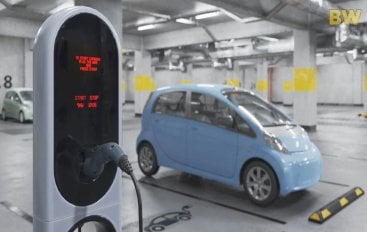Why Housing Societies Should Invest In EV Charging Stations?




Electronic Vehicle disruption has changed the landscape of the Indian logistics, transportation, and automobile segments. The automobile segment specifically has been one of those few markets that promptly adopted the path of electrification with a vision of a positive climate future.
The rising prominence of EVs in India
The surge in oil prices, as well as subsidies for EVs from the government, is pushing the growth of the EV segment in India. Adding to it, the rising consumer awareness about the benefits of electric vehicles over conventional modes of transportation and their eco-friendly attribute is further boosting the growth of the EV market in our country. This trend was highlighted by JMK Research in its recent report. The study states that India has witnessed a spike in EV sales since the month of May this year. The month of September however saw the highest ever sales clocking 34,316 units!
Housing societies embracing the Electric Vehicles revolution
Due to the growing prominence of electric vehicles in India, it would be appropriate to say that India is betting big on EVs to cut its fuel import bill and promote environmental protection by providing subsidies and incentives to encourage the use of these vehicles. This coupled with the government assistance and support from real estate developers is nudging even the residential complexes to adopt the EV route and provide the necessary robust infrastructure to the residents.
As of now, the majority of buyers of Electric Vehicles are primarily from the apartment communities and gated societies across metros cities of Delhi, Mumbai, and Bangalore. EVs are still in minority in housing societies but the trend is gradually picking up pace. With Electric Vehicles becoming mainstream potential residents are well aware and conscious about the environment. Hence, they will demand EV charging as an inbuilt amenity in their apartment just as the air conditioners in the times to come. Thus, it becomes essential for RWAs and residential complexes to invest in EV charging stations to meet the rising demands of the residents.
The government’s assistance to boost the EV segment
The efforts started in the year 2019 when The Ministry of Housing and Urban affairs issued a guideline to allocate parking space for EVs in residential and commercial spaces. The Ministry even made it mandatory to set up an EV charging station at every 3 square km area in cities at a pan India level.
The recent launch of the Indian Standard for Light Electric Vehicle AC Charge in May this year will expectedly increase the market for low-powered, low-cost charging points that would be easily installable for residential charging. In June, the Delhi government approved the facility to expand charging infrastructure in apartments, housing societies, hospitals, malls, and theatres. The respective State governments are also offering property tax concessions to housing societies to set up EV charging stations. All these initiatives are collaboratively contributing in pushing the housing societies to prioritize the planning of setting up EV charging stations.
Challenges faced by the housing societies in adopting EVs
While EV adoption in housing societies is booming, it does face its fair share of challenges. One major hurdle that these communities face is the lack of access to charging infrastructure as the parking slots are part of the common area. Adding to it, even the building premises are required to have an additional power load, which is equivalent to the power required for all charging points to be operated simultaneously.
While the problem of each parking slot not having an EV charger is manageable, the actual issue exists at the granular level. Only a handful of residents in every community are being the early adopters of this change. This implies that the segment of the population buying electric two-wheelers or three-wheelers is comparatively less.
To enable this set of early adopters, society can simply provide EV charging stations in just a few common parking slots, to begin with. The next question that then arises is how society will be able to achieve this. For this, the housing societies first need to gauge how many charging stations will be needed. Then they need to identify the spots where these will be installed. The next step is to identify the vendors who can install, operate and manage the EV charging stations. The RWAs further need to understand the costing from their installation and management which varies between Rs. 40,000 to Rs. 6 lakh per station depending on the type of charger (bike/car, slow charging / fast charging, etc.).
The next stage is to comprehend the revenue models from these vendors. Installing EV charging stations benefits both the residents as well as the association. This is the reason why they should invest in installing the same. Hence, it is essential that both the associated parties should have a clear understanding as to how embracing the EV route will be beneficial for all!
Summing up!
With the EV revolution, Indian societies are witnessing major transformations. The primary reason rather the benefit for a housing society to install EV charging stations during the early days of the EV revolution in India is that doing so is a clear indication of it being a progressive society. This is what will differentiate the residential complex from the others in the market that are still working with a conventional approach. Treading on the EV path depicts that the community not only supports the EV-owning residents in their right choice for protecting the environment but also empowers all other residents who are considering purchasing electric vehicles. It is just one of those aspects that make a society the aspirational address for discerning owners and tenants who are willing to pay premium rent for high standards of life!

